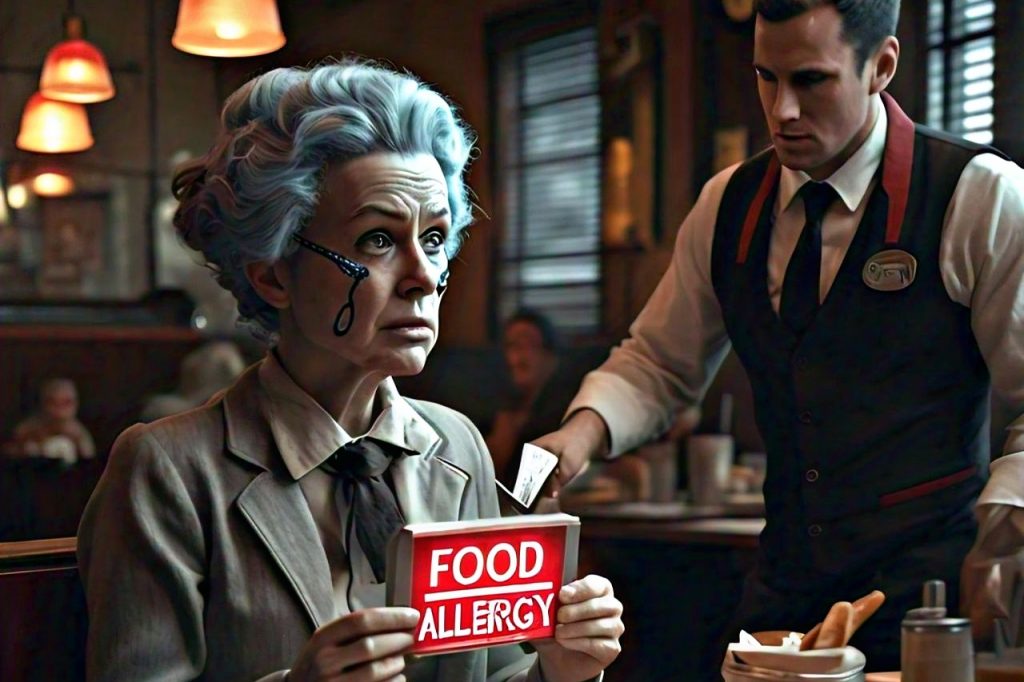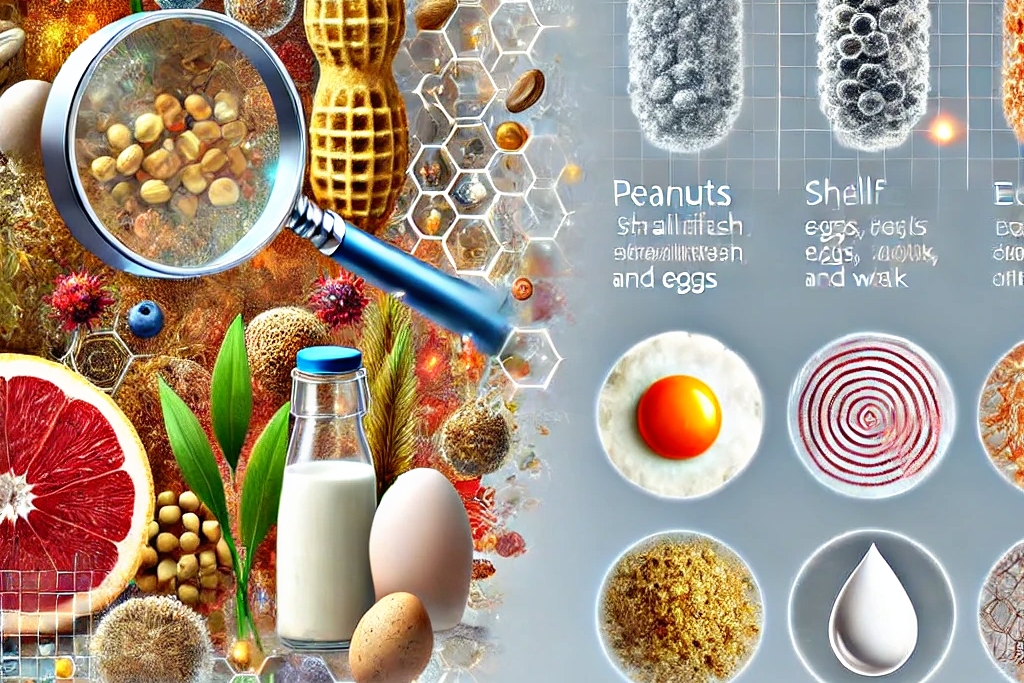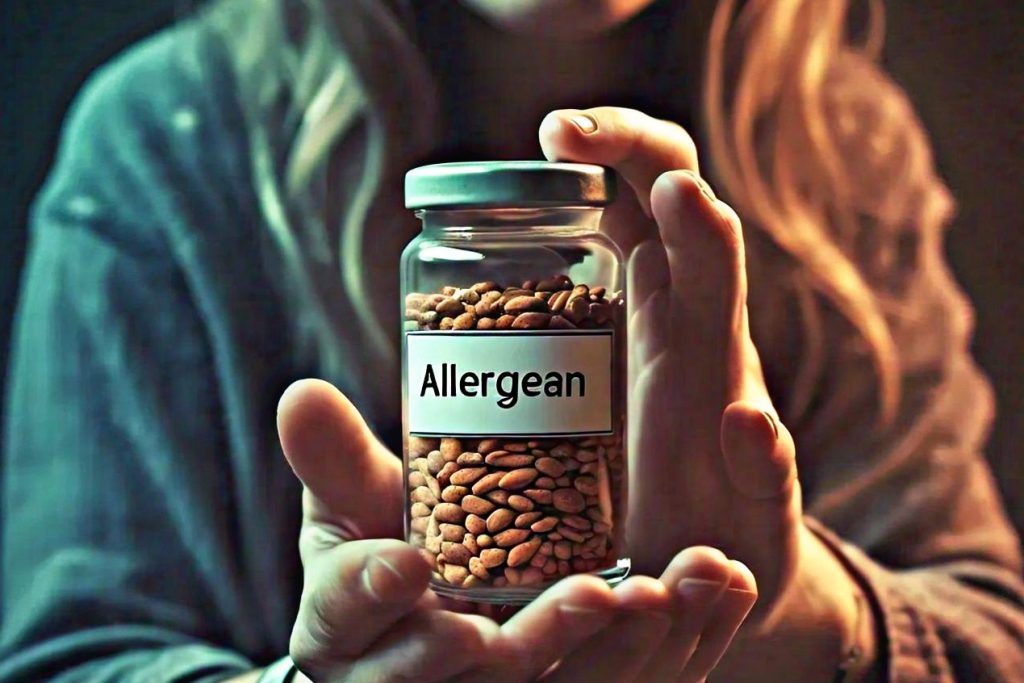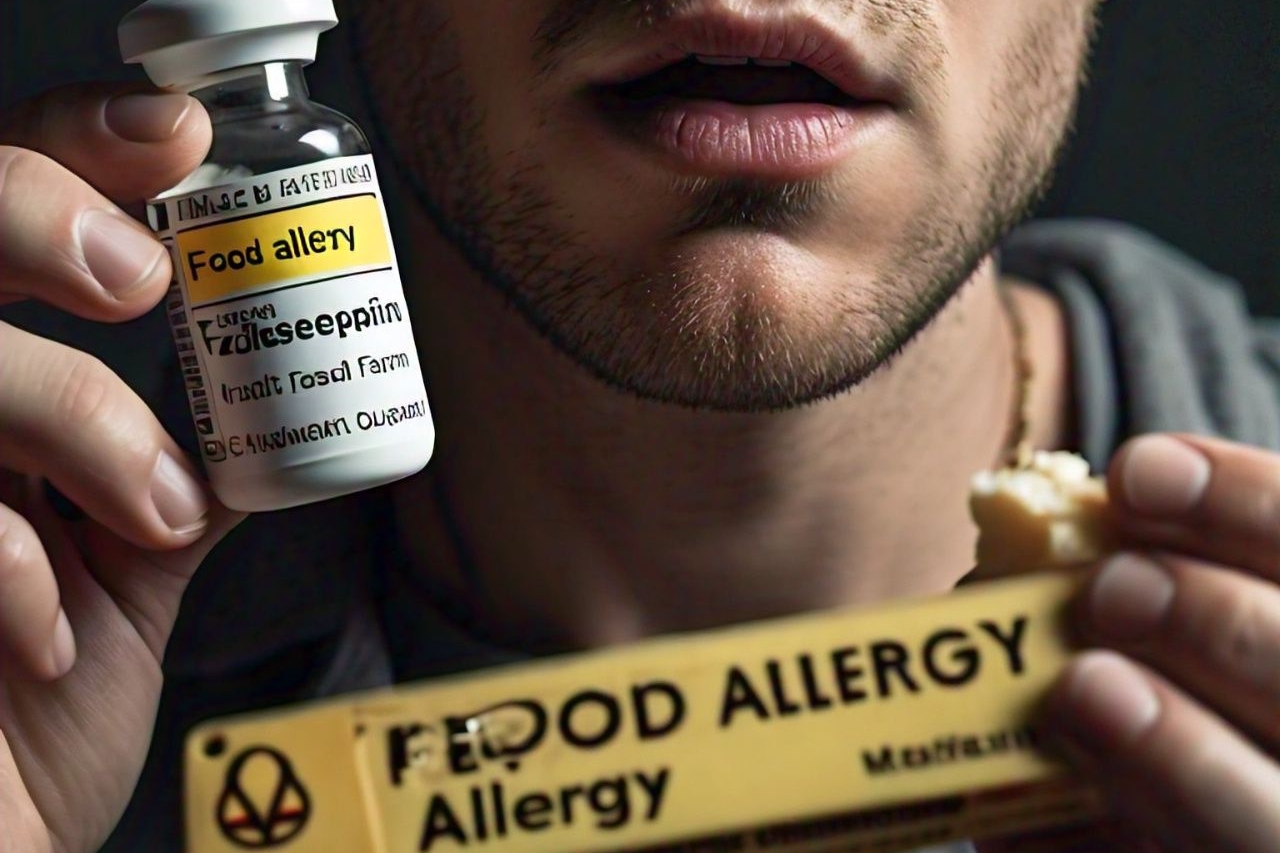Food allergy rashes are one of the most common and visible symptoms of an allergic reaction triggered by consuming certain foods. They can range from mild irritations to severe, life-threatening conditions, and their impact goes beyond physical discomfort, often affecting a person’s quality of life. This article provides an in-depth exploration of food allergy rashes, focusing on their symptoms, causes, diagnosis, and management strategies.
What Are Food Allergy Rashes?
Food allergy rashes are skin reactions caused by the immune system’s response to allergens found in specific foods. When someone with a food allergy consumes or comes into contact with an allergenic food, their immune system mistakenly identifies it as harmful. In response, it releases chemicals such as histamine, leading to symptoms like rashes, swelling, and itching.
Rashes caused by food allergies typically appear as red, itchy, and sometimes raised patches on the skin. While they are often localized, they can spread over larger areas or even affect the entire body, depending on the severity of the reaction.
Symptoms of Food Allergy Rashes

The presentation of food allergy rashes can vary widely among individuals. Some of the most common symptoms include:
- Hives (Urticaria)
- These are raised, itchy, and red welts that can appear anywhere on the body.
- Hives caused by food allergies usually emerge shortly after consuming the allergenic food.
- Eczema (Atopic Dermatitis)
- Chronic food allergies can exacerbate eczema, leading to dry, scaly, and itchy skin.
- This type of rash is more common in children but can occur in adults as well.
- Angioedema
- This is swelling that occurs beneath the skin, often around the eyes, lips, or hands.
- It may accompany hives or occur independently in response to a food allergen.
- Contact Dermatitis
- If food allergens come into direct contact with the skin, they can cause redness, itching, and irritation localized to the contact area.
- Anaphylactic Rashes
- In severe cases, rashes can signal the onset of anaphylaxis, a life-threatening allergic reaction that requires immediate medical attention.
Common Food Allergens Associated with Food Allergy Rashes
Certain foods are more likely to trigger allergic reactions, including rashes. The most common food allergens include:
- Peanuts and Tree Nuts: Cashews, almonds, and walnuts are frequent triggers.
- Shellfish and Fish: Shrimp, lobster, and various fish species can cause reactions.
- Milk and Dairy Products: Lactose intolerance differs from a milk allergy, which can lead to severe reactions.
- Eggs: Egg whites are a common allergen, though yolks can also be problematic.
- Soy and Wheat: These are often hidden in processed foods, making them tricky to avoid.
Children may outgrow some food allergies, such as those to milk or eggs, but others, like peanut or shellfish allergies, often persist into adulthood.
Diagnosing Food Allergy Rashes

Diagnosing food allergy rashes requires careful observation and sometimes medical testing. Steps involved in the diagnosis include:
- Detailed Medical History
- A healthcare provider will ask about the timing of the rash, foods consumed, and any other symptoms experienced.
- Physical Examination
- The appearance and location of the rash can provide clues about its cause.
- Skin Prick Test
- Small amounts of potential allergens are introduced to the skin to observe for an allergic reaction.
- Blood Tests
- Specific IgE tests can measure the immune system’s response to suspected food allergens.
- Elimination Diets
- Eliminating potential allergens from the diet and reintroducing them under medical supervision can help identify triggers.
- Oral Food Challenge
- Conducted in a controlled environment, this test involves consuming small amounts of a suspected allergen to confirm its role in causing symptoms.
Managing Food Allergy Rashes

Managing food allergy rashes involves both preventing exposure to allergens and treating symptoms when they arise. Here are the key approaches:
1. Avoidance of Allergen Triggers
- Read Labels: Food packaging must be scrutinized for allergen warnings.
- Dining Out Precautions: Communicate dietary restrictions to restaurant staff.
- Cross-Contamination Prevention: Ensure food preparation areas are allergen-free.
2. Medication for Symptom Relief
- Antihistamines: These are the first line of defense for mild rashes and itching.
- Topical Corticosteroids: Creams and ointments can reduce inflammation and redness.
- Epinephrine Auto-Injectors: For severe allergic reactions, epinephrine can halt progression to anaphylaxis.
3. Skin Care Tips
- Moisturize Regularly: Hydrated skin is less prone to irritation.
- Avoid Harsh Soaps: Opt for hypoallergenic and fragrance-free products.
- Cool Compresses: These can soothe itching and swelling.
Types of Food Allergy Rashes
Food allergy rashes manifest in different ways, depending on the type of allergen and the individual’s immune response. Let’s delve deeper into the various types:
1. Acute Urticaria
- This is the most common form of rash associated with food allergies. It appears suddenly and may last for a few hours or days.
- Foods like shellfish, peanuts, and strawberries are frequent culprits.
2. Chronic Urticaria
- Although less common, some individuals experience recurrent episodes of hives over an extended period.
- While not always directly caused by food, certain dietary triggers can exacerbate the condition.
3. Papular Eruptions
- These small, red bumps resemble insect bites and may appear on areas like the arms, legs, or torso.
- Such rashes may indicate a delayed reaction to a food allergen.
4. Fixed Drug-Like Eruptions
- Rarely, certain food additives, like artificial dyes, can cause localized, darkened rashes similar to those from medication allergies.
Understanding the type of rash is crucial for tailoring treatment and preventive strategies.
Hidden Sources of Food Allergens

One of the most challenging aspects of managing food allergy rashes is identifying hidden sources of allergens. These can be found in:
- Processed Foods
- Many packaged products contain unexpected ingredients like soy, gluten, or dairy derivatives.
- Always read ingredient labels carefully, even for non-obvious items like sauces, dressings, and snack foods.
- Cross-Contamination
- Cross-contamination occurs when allergen-free foods come into contact with allergenic foods during processing or preparation.
- This is especially common in shared kitchens, bakeries, and restaurants.
- Non-Food Products
- Some cosmetics, medications, and even pet foods may contain traces of allergens. For example, certain lip balms may contain nut oils, which can trigger reactions when applied to the skin.
- Cultural and Ethnic Foods
- Foods prepared in traditional ways may include allergens not commonly found in Western diets. For instance, peanut oil is often used in Asian cooking.
The Psychological Impact of Food Allergy Rashes
Dealing with food allergy rashes goes beyond physical symptoms. It can take a significant toll on mental health, particularly for those who face frequent or severe outbreaks.
1. Social Challenges
- Individuals with visible rashes may feel self-conscious, leading to withdrawal from social activities.
- Dining out or attending events can become stressful due to the risk of exposure.
2. Anxiety and Fear
- The unpredictability of allergic reactions can cause constant worry, especially in parents of children with food allergies.
- Severe rashes may also make individuals fear the progression to anaphylaxis.
3. Impact on Quality of Life
- Chronic conditions like eczema linked to food allergies can interfere with sleep, work, and daily routines.
- Emotional exhaustion from managing allergies can further diminish well-being.
It’s essential to address these psychological aspects through counseling, support groups, or stress-management techniques.
Food Allergy Rashes in Children
Children are particularly susceptible to food allergy rashes, and their reactions can differ from those of adults.
1. Common Childhood Allergens
- In children, the most common triggers include milk, eggs, peanuts, soy, and wheat.
- Some children may outgrow these allergies, while others retain them into adulthood.
2. Identifying Triggers in Infants
- Babies may develop food allergy rashes during weaning or after introducing new foods.
- Symptoms like red patches around the mouth, excessive crying, or digestive distress may accompany the rash.
3. Role of Breastfeeding
- Allergens can pass through breast milk, potentially causing rashes in sensitive infants.
- Nursing mothers may need to adjust their diets to eliminate potential allergens.
4. Special Considerations for Schools
- Schools and daycare centers must have allergy action plans in place to protect children from exposure to allergens.
- Parents should provide epinephrine auto-injectors and educate staff about symptoms of food allergy rashes.
Emerging Treatments for Food Allergy Rashes

Advancements in allergy research have introduced new approaches to managing food allergy rashes and reducing the overall risk of reactions.
1. Oral Immunotherapy (OIT)
- OIT involves gradually exposing the patient to small, controlled amounts of the allergen to build tolerance.
- While promising, this treatment is still being refined and may not be suitable for all patients.
2. Biologic Therapies
- Monoclonal antibodies, such as omalizumab, are being explored as potential treatments to reduce allergic responses.
- These therapies work by targeting specific immune pathways involved in allergic reactions.
3. Personalized Medicine
- Genetic testing and advanced diagnostics may help identify specific allergens and predict the severity of reactions.
- This tailored approach allows for more precise treatment plans.
Dietary Alternatives for Allergen-Free Living
Living with food allergies requires finding safe substitutes for common allergens to maintain a balanced diet.
1. Dairy Alternatives
- Soy, almond, oat, and coconut milk are popular substitutes for cow’s milk.
- Nutritional yeast can replace cheese in certain recipes.
2. Gluten-Free Options
- Rice, quinoa, and corn-based products serve as excellent replacements for wheat.
- Many grocery stores now stock gluten-free breads, pastas, and baked goods.
3. Egg Replacements
- Applesauce, flaxseeds, or commercial egg replacers can be used in baking.
4. Nut-Free Solutions
- Sunflower seed butter or tahini can replace peanut butter.
- Always verify that alternatives are processed in nut-free facilities.
These options ensure individuals with food allergy rashes can enjoy diverse and satisfying meals without compromising safety.
How to Support Someone with Food Allergy Rashes
If someone in your family or social circle has food allergy rashes, you can play a crucial role in their well-being:
- Educate Yourself
- Learn about their specific allergens and how to recognize signs of a reaction.
- Understand how to administer medications like antihistamines or epinephrine.
- Be Inclusive
- Plan gatherings with allergen-free foods to ensure they feel included.
- Avoid downplaying the seriousness of their allergies.
- Encourage Communication
- Create an open environment where they feel comfortable discussing their needs and concerns.
Final Thoughts
Food allergy rashes, while often manageable, require a proactive and informed approach to prevent and treat. By understanding their triggers, symptoms, and management strategies, individuals and caregivers can minimize their impact on daily life. As research continues to advance, new therapies and preventive measures offer hope for better outcomes in the future.
Ultimately, living with food allergies and the associated rashes is about vigilance, adaptability, and a commitment to maintaining health and safety in every aspect of life.

